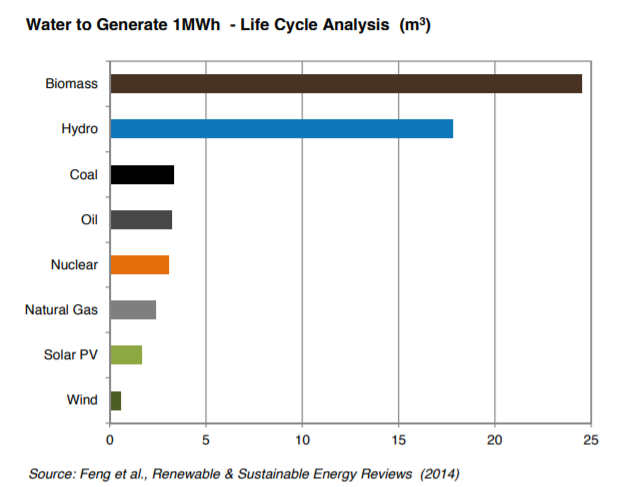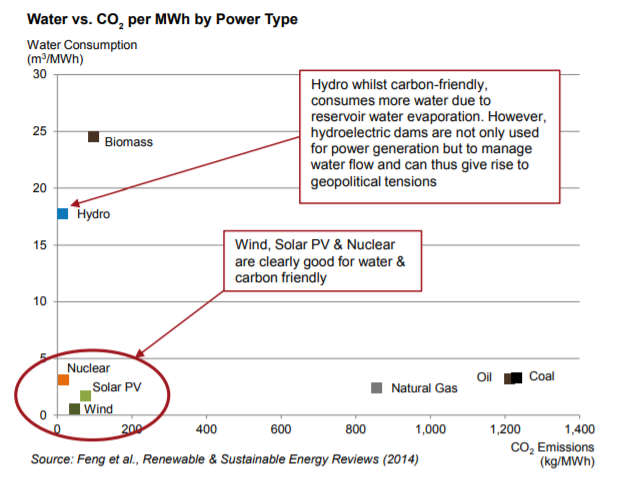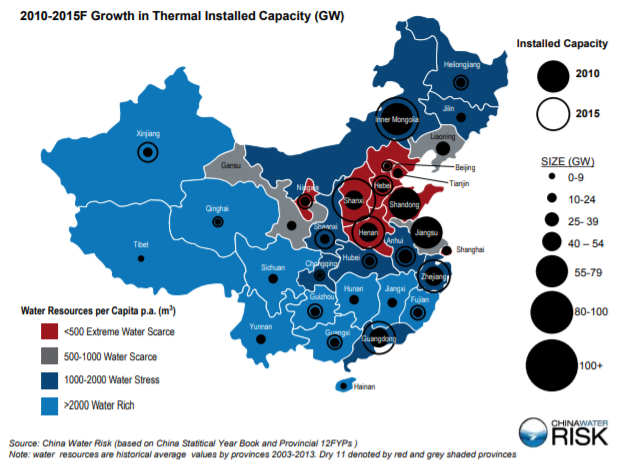
In last week’s post I looked at energy companies and their trajectory relative to the Paris Climate Agenda.
The insights clearly suggested a mixed picture. A clear point of how important it is to decarbonised the way we fuel our economy and global society.
But that’s unfortunately not all there is to the energy generation picture!
Water and Climate Change
As as we all know: water is one of the other by Climate Change fundamentally impacted natural resources. To the point that over the course of the past 10+ years, a range of NGOs, scientific and international organisations have repeatedly outlined the risk we’re facing as a consequences:
Union of Concerned Scientists (24th June 2010):
One of the starkest effects of climate change is the anticipated rise in sea level worldwide. This occurs for two main reasons – the expansion of the ocean as it warms, and the increased melt from ice sheets, ice caps and glaciers. Along with alarming threats to coastal communities, infrastructure, economies and ecosystems, this rise has implications for available freshwater, as rising sea levels drive saltwater into freshwater aquifers. To be useful for drinking or irrigating, more water from our aquifers, then, would need to be treated, usually by energy-intensive processes. Given the wide range of human activities that depend – directly or indirectly – on water, future climate-driven changes in water resources will affect many aspects of our lives.
International Union for Conservation of Nature (IUCN; November 2015)
Climate change impacts will have direct consequences for water security. The Intergovernmental Panel on Climate Change (IPCC) alerted the global community to the great vulnerability of freshwater resources as a result of climate change. A recent study by the International Food Policy Research Institute found that 4.8 billion people – more than half the world’s population – and approximately half of global grain production will be at risk due to water stress by 2050 if business-as-usual persists.
UN Water Programme (September 2018)
Water is the primary medium through which we will feel the effects of climate change. Water availability is becoming less predictable in many places, and increased incidences of flooding threaten to destroy water points and sanitation facilities and contaminate water sources.
Earth Institute, Columbia University (23rd September 2019)
A recent study from Harvard projects that by 2071, nearly half of the 204 fresh water basins in the United States may not be able to meet their monthly water demand. This is due in part to growing populations, but also because of the effects of climate change. Around 50 years from now, the study found, many U.S. regions may see their water supplies reduced by a third of their current size, while demand continues to increase. The authors warn this could pose serious challenges for agriculture.
Water & Energy Generation: Two sides of one same coin – for now
What few people realise: Energy generation requires water. A lot of water.
Not just in the energy generating processes, but also in the extraction of the energy source (coal in particular), and/or the making of the necessary equipment.
An extremely well done report by China Water Risk (‘Toward a water & energy secure China: Tough Choices ahead in power expansion with limited water resources’) – already published in 2015 – reviews in detail the links between the two resources. At the example of China, it illustrates how water resources and energy generation must be considered hand in hand as decarbonisation is being driven forward.
Two of the most relevant graphs that map out some of the stats for an easy visual digest are the following:
 |  |
However, to take China as an example, another important point made by the report: the number m3 per 1MWh of energy generated is just one dimension.
The other dimension is:
- Where does the energy generation take place?
- Where does the input resource to the generation (water, coal, uranium, or metal for solar and wind) come from? And
- How does the water table/ resource profile of those geographies look like?
And that indeed gets us to the 2nd challenge: Not only do some of those energy generating technologies require a fair amount of water. But their respective input resources may be found in areas where there is geologically speaking not little water available, but also a lot food production (agriculture) going on.
And agriculture is know to absorb up to 70% of a geography’s water resources ….
The report indeed illustrates very tangibly the challenge that not just China, but indeed any country is facing as we start to decarbonise our economies all the while trying to ensure energy security:
The triangulation of food, water and energy security, together with ensuring livelihoods for its population.
The following illustration maps the growth of thermal power generation (coal) against water scarce areas again at the Chinese example. The readers are well advised to also overlay population density onto this graph …

Conclusion: All is a trade off – Mind regrettable substitution
Carbon footprint is just one aspect of Climate Change. And while it is of highest relevance to significantly cut our CO2 emissions, other factors – such as food and water security – cannot be ignored either.
Why is that so?
Some of the new energy generation technologies have an extremely high footprint when it comes to other limited, but equally critical resources. In this particular case we looked at water as it is the fundament onto which our food system and our daily survival is built.
It once more becomes clear: As urgent as the requirement to decarbonise is, even this ‘simple’ ask entails some very tough, and carefully to be mediated, decisions and trade offs.
Some significant ground can be gained by leveraging all possible types of efficiencies as a first port of call for any efforts.
But efficiencies alone are insufficient for our global society to survive successfully. And hence, there will be no doubt that we will have to come to terms with some very inconvenient trade offs.

